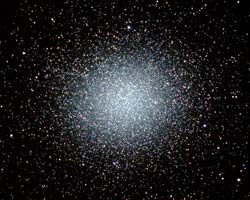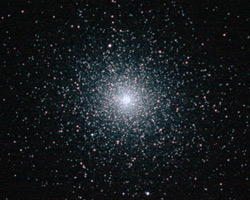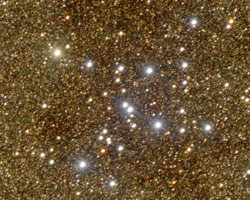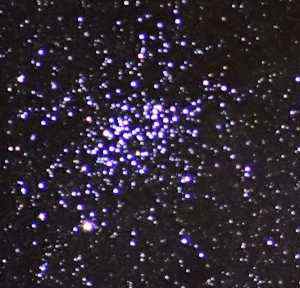NGC 5139 (Omega Centauri)

|
Omega Centauri is the King of Globs. It is the brightest and largest
globular cluster visible to us. To the naked eye it looks like a peculiar fuzzy
star. Estimates of the number of stars it contains vary widely. Situated in
the southern sky it contains somewhere between 700,000 and 1.5 million stars. It has
an apparent diameter the same size as the moon. The gallery contains a great closeup
shot of this. Click the image at left for more. |
NGC 104 (47 Tucanae)
 |
NGC 104 is the Queen of Globs. It is the second brightest and second
largest globular cluster. Only the famous Omega Centauri is bigger and
brighter. It is located very close to the Small Magellenic Cloud and looks to the
naked eye like a dim fuzzy star. It is a beautiful thing to see in a large aperture
telescope. I remember seeing it for the first time in an 8" scope and wondering
at how its wonderful pattern of stars seemed to be just hanging in space somehow. |
M7 in Scorpius

|
A beautiful cluster set in one of the brightest Milky Way star fields.
A bright colorful cluster. In the background, far, far away, thousands of
suns blaze quietly. |
NGC 3532
 |
NGC 3532 is one of the finest sights for binoculars or a small telescope,
even naked-eye at dark sites. This large densely packed open cluster is a feature of
the southern sky. When I first saw this cluster in my small 4.5" reflector I
was captivated by it. It was like seeing a chain of diamonds hanging in the sky.
There are around two hundred very bright, densely packed, sparkling stars in this
lot. It has no name ! I call it the Jewel Chain. |
|
|
More cluster images will be coming soon. |
|

